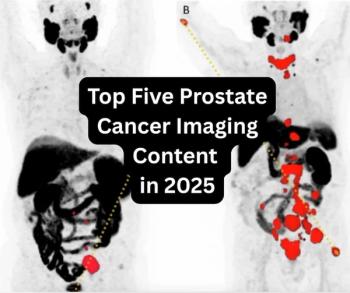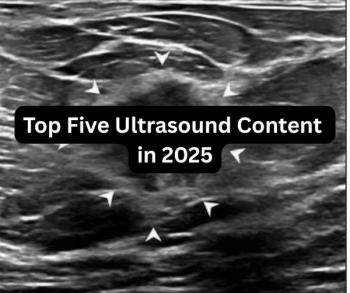
3-D mode stretches ultrasound reach
Three-dimensional ultrasound could increase power and expand applicationsfor the rapidly growing imaging modality. Researchers workingwith Philips Ultrasound, an early developer of 3-D ultrasound,are peering into parts of the body that were inaccessible
Three-dimensional ultrasound could increase power and expand applicationsfor the rapidly growing imaging modality. Researchers workingwith Philips Ultrasound, an early developer of 3-D ultrasound,are peering into parts of the body that were inaccessible withstandard ultrasound scanners, said Ralph Ranalli, transducer productmanager.
A market for this image processing technique may develop quicklyif clinical studies show that 3-D ultrasound provides new diagnosticinformation.
Use of 3-D image processing in computed tomography gained acceptanceslowly because radiologists, the primary users of medical imagingequipment, did not consider the technique particularly usefulin a clinical setting. The market for 3-D and multiplanar reconstructionin CT was driven by referring physicians, particularly surgeons,who found the reader-friendly images useful.
Ultrasound is a latecomer to 3-D. Clinical efforts to proveits applications are in early stages, but initial results withthe Philips system indicate practical diagnostic benefits of post-scanningreconstruction, Ranalli said. Ranalli is based at Philips Ultrasound'sworldwide headquarters in Santa Ana, CA. The 3-D technology wasdeveloped at the Dutch vendor's research facility outside Paris.
Applications of ultrasound are fundamentally limited by itsinability to image through bone. Ultrasound reconstruction maycircumvent this difficulty in some cases by first acquiring thevolumetric image data from an accessible angle and then creatingan image slice across the original scan planes. The definitionof a diagnostic plane is, in effect, broadened and distinguishedfrom the scan plane.
"There is a separation of the connection between the transducerand the (diagnostic) plane," Ranalli said. "Static informationin the volume can be re-explored. That can be significant, particularlysince orientations may be changed."
For example, Philips has created ultrasound images of a neonatalbrain that were previously not possible because sound waves canonly enter the head from a particular angle through the soft spotin the skull.
"No one has ever seen that view (in standard ultrasoundscanning), because you can't get to that scan plane. But you cansweep the 3-D volume line by line and then use the computer toreconstruct the plane," Ranalli said.
Philips is working on two types of 3-D ultrasound techniques:
- Surface rendering 3-D techniques, which are relativelycomplex and will take longer to develop. To provide a full 3-Dfetal image, for example, segments of the fetus's body must beseparated from the volume of ultrasound data and made semitransparentso that the human eye can better visualize it, Ranalli said.
- Volumetric multiplanar reconstruction techniques, forwhich work is progressing faster. This method provides the userwith blocks of tissue that can be sliced and pulled apart on aworkstation screen, just as a pathologist slices a specimen.
Multiple diagnostic planes are presented in a perspective fashionto create the impression that the user is working with a volume.That volume can be re-sliced, pulled apart and rotated in nearreal-time.
BRIEFLY NOTED:
- GE Medical Systems has added a slower--but less expensive--versionof its mid-field magnetic resonance imaging system to its productline. The MR Max Encore uses an earlier gradient coil technology(GPS gradients), rather than the High Duty Cycle gradients usedin the MR Max Plus.
The system introduction is a response to market demand forless expensive MRI systems in low-throughput situations, saidJohn Falconi, manager of mid-field MRI systems. The Encore isappropriate for sites with throughput of fewer than 10 patientsper day, he said.
With its lower cost, the Encore should break even at aboutfour patients a day. It is upgradable to the MR Max Plus if clinicalneeds change, he said.
- Molecular Biosystems (MBI) of San Diego is developinga second ultrasound contrast agent. MBI's Albunex intravascularblood flow agent is undergoing Food and Drug Administration review.If approved, Albunex would be the first commercially availableultrasound contrast product. The second product is an oral agentfor abdominal ultrasound scanning.
The new agent is designed to improve anatomic definition andaddress the problem of bowel gas obscuring structures during abdominalscanning. About 4 million abdominal ultrasound exams are performedin the U.S. each year, according to MBI.
Newsletter
Stay at the forefront of radiology with the Diagnostic Imaging newsletter, delivering the latest news, clinical insights, and imaging advancements for today’s radiologists.




























